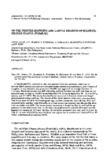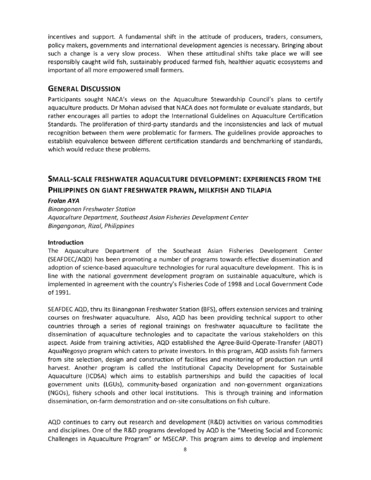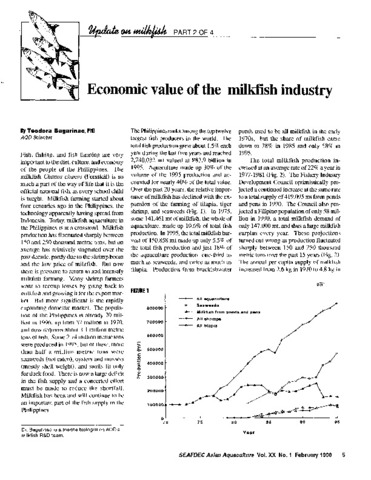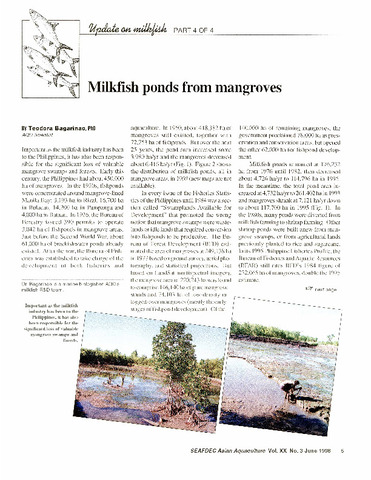On the induced spawning and larval rearing of milkfish, Chanos chanos (Forskal)

View/Open
Date
1979Page views
301Metadata
Show full item recordCited times in Scopus
19 readers on Mendeley
Share
Abstract
A female milkfish, captured at sea, was injected with two hormonal injections of acetone-dried salmon pituitary powder and human chorionic gonadotropin, plus Vitamin B complex. It was stripped, and produced 128,000 ripe eggs with an average diameter of 1.15 mm. Fertilization rate was 38% following artificial fertilization with milt from an uninjected male. A total of 36,000 larvae hatched (74% of fertile eggs) after 26–32 h at 34 ‰ salinity and 27–32°C. The newly hatched larvae measured 3.4 mm in mean total length and possessed a large yolk sac. The mouth of the larvae opened about 54 h after hatching. The larvae were fed with fertilized oyster eggs, rotifers, copepods, brine shrimp, flour and prepared feed, together with Chlorella. A critical period was between the 4th and 6th days with mortality over 80%. The larvae started increasing in length by Day 8, and had the appearance of the wild fry by Day 11. On Day 13 a pigmentation pattern developed and the biggest larva measured 10.0 mm. By Day 18 the larvae measured 12.5 mm, and 14.5 mm by Day 21. A total of 2,859 fry was obtained; the highest larval survival rate obtained from different experimental groups was 46.8%.
Description
Contribution No. 35 of the Aquaculture Department, SEAFDEC.
Suggested Citation
Liao, I.-C., Juario, J. V., Kumagai, S., Nakajima, H., Natividad, M., & Buri, P. (1979). On the induced spawning and larval rearing of milkfish, Chanos chanos (Forskal). Aquaculture , 18(2), 75-93. https://doi.org/10.1016/0044-8486(79)90021-8
Subject
Taxonomic term
Collections
- AQD Journal Articles [1248]
Related items
Showing items related by title, author, creator and subject.
-
Small-scale freshwater aquaculture development: Experiences from the Philippines on giant freshwater prawn, milkfish and tilapia
Aya, Frolan (Japan International Cooperation Agency, 2013-12)The Aquaculture Department of the Southeast Asian Fisheries Development Center (SEAFDEC/AQD) has been promoting a number of programs towards effective dissemination and adoption of science-based aquaculture technologies ... -
Economic value of the milkfish industry
Bagarinao, Teodora (Aquaculture Department, Southeast Asian Fisheries Development Center, 1998)A brief description is given of the milkfish (Chanos chanos) farming industry in the Philippines. Over the past 20 years, the relative importance of milkfish has declined with the expansion of tilapia, tiger shrimp and ... -
Milkfish ponds from mangroves
Bagarinao, Teodora (Aquaculture Department, Southeast Asian Fisheries Development Center, 1998)



